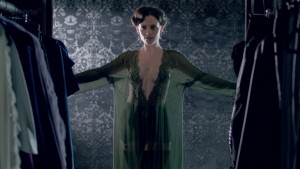In reading the work of Swinburne, I was constantly lost in his pretty rhyme schemes. They are always perfect, always finding a word to rhyme with Faustine, always completing each complicated rhyme scheme that he chose for the poem. These constantly perfect rhymes tend to give a sing-song effect to the poems – “A Match” is an excellent example of this. The constant rhyming also made me feel as though the whole of each poem was childish or trivial, just a cute poem that was fun to listen to and then move onto the next one without giving it much in depth thought. But Swinburne challenges this tendency at every turn. His poems talk about very heady topics, love and sex, pain and death, and usually in relation to actions or situations that are not socially acceptable (i.e. necrophilia).
One could argue that discussing these kinds of topics within such strict rhyme schemes that seem to mimic nursery rhymes is an attempt to trivialize the subjects. Love, according to tradition, should be given sophisticated sonnets rather rhyming quatrains, and implications of sex should be veiled with beautiful language about flowers and overpowering love instead of blood and pain. But Swinburne works to invert these traditions through both his rhyme schemes and his subject matter.
The poem “In the Orchard” is no exception. It has a simple rhyme scheme of aabab ccbcb ddbdb, etc. to talk about passionate love. He includes some flower imagery to bring up virginity – “take it then, my flower…/My rose, so like a tender mouth it is” (line 18-19). This in of itself is an inversion from more traditional poetry in that the female has the voice in the poem and is taking agency in initiating sex with her male partner rather than a male telling a female to not be so prudish and to take pleasure, or rather allow him to take his pleasure from her, while she is still desirable to him.
The love story then becomes more graphic, with the speaker wanting to be slain now that she has had sex and reached a sublime.
